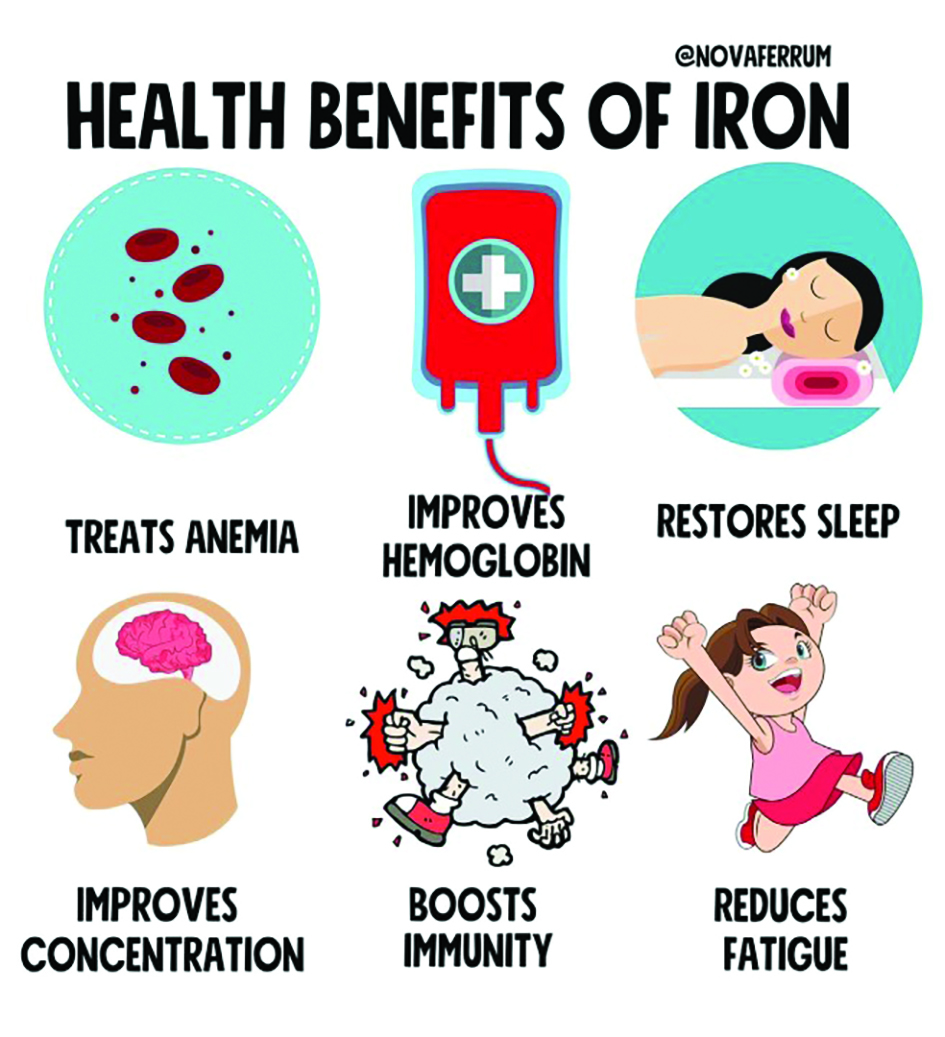Optimal nutrition plays a crucial role in addressing various health concerns. Among the deficiencies commonly observed, one prevalent issue is iron deficiency. Unlike the spotlight on B12 or vitamin D, Iron deficiency often remains overlooked within the wellness domain. Iron deficiencies stand as the most widespread insufficiency worldwide. Notably, statistics from the Centers for Disease Control reveal that approximately 10 percent of women grapple with iron deficiency.
Iron plays a vital role in our overall well-being. Beyond its association with strength and resilience, iron holds the key to numerous bodily functions, making it an indispensable component of a healthy lifestyle.
What Characterizes An Iron Deficiency?
Iron, a mineral existing in both the earth and specific food sources, isn’t produced by our bodies. It must be acquired from the foods we consume. An iron deficiency, as the name implies, arises when the body lacks sufficient iron obtained from our diet. This deficiency poses various concerns, primarily due to the crucial role of iron in producing haemoglobin – a vital protein housed within red blood cells responsible for transporting oxygen throughout the body. If left unaddressed, an iron deficiency can progress into iron-deficiency anaemia.
Factors contributing to iron deficiency anaemia encompass blood loss resulting from injury or menstruation, as well as challenges in absorbing iron from consumed food, due to conditions like inflammatory bowel disease or restrictive dietary patterns, or even ageing. Moreover, the demand for iron escalates during pregnancy, potentially leading to deficiencies in pregnant women or new mothers.
Symptoms Of Iron Deficiency
Iron insufficiency can manifest through a broad spectrum of symptoms that are frequently overlooked or misdiagnosed within conventional medical assessments. The reason lies in the multifaceted role of iron within the body – not solely facilitating oxygen transport to cells, but also governing various enzymatic reactions pivotal for muscle metabolism, physical development, neurological maturation, and even hormone synthesis.
Essentially, iron holds significant importance in bodily functions. Detecting iron deficiency involves recognizing specific indicators including Profound fatigue * Weakness * Pale skin * Chest discomfort, rapid heartbeat, or breathlessness * Headaches, vertigo, or feelings of light-headedness * Cold extremities * Tongue inflammation or tenderness * Fragile nails * Unusual cravings for non-nutritive substances like ice, dirt, or starch * and Reduced appetite, notably observed in infants and children affected by iron-deficiency anaemia
Diagnosis Of Iron Deficiency: The process of diagnosing an iron deficiency usually involves several sequential steps. Initially, I conduct a comprehensive physical examination and engage in discussions with my patients regarding their medical history and prevailing symptoms. In terms of diagnostic evaluations, the following tests are commonly ordered:
- Complete Blood Count (CBC): This assesses your red blood cell count and haemoglobin levels. Low counts in either can indicate anaemia.
- Iron Blood Test: This test gauges the iron levels in your blood. However, its reliability may be limited as it might not reflect low iron levels in the rest of your body, even if the blood test appears normal.
- Ferritin Test: Ferritin, a protein aiding in iron storage, is assessed in this test. Low ferritin levels often signal a potential deficiency in the body’s iron reserves.
- Reticulocyte Count: Reticulocytes, considered young red blood cells, are evaluated in this test. Low reticulocyte levels could indicate a concurrent iron insufficiency.
- Peripheral Smear: This test involves examining your red blood cells under a microscope to detect any unusual characteristics like smaller or paler cells, which might signify low iron levels.
A conclusive diagnosis of iron deficiency is reached when multiple tests collectively indicate a deficiency, as opposed to a single test result. This approach ensures an accurate assessment of iron levels within the body.
Addressing Iron Deficiency
While iron deficiency is fairly prevalent, the encouraging aspect is that it’s generally remediable. It helps greatly to incorporate more iron-rich foods into the diet, like Chicken * Turkey * Legumes like beans and lentils * Tofu * Baked Potatoes * Cashews * Dark green leafy vegetables such as spinach (cooked appropriately) * and Whole-grain and enriched breads.
Boosting intake of vitamin C-rich foods is equally essential, as vitamin C facilitates iron absorption. Foods high in vitamin C include Broccoli; Grapefruit; Kiwi; Leafy greens; Melons; Oranges; Peppers; Strawberries.
Note: If elevating consumption of vitamin C and iron-rich foods doesn’t effectively raise iron levels, seeking guidance from a healthcare professional about iron supplementation is advisable. Self-prescribing iron supplements can pose health risks.
Despite its significance, iron tends to be overlooked, yet it remains a crucial mineral. It’s beneficial for everyone to prioritize the consumption of iron-rich foods, ensure a daily intake of vitamin C, and undergo testing for iron levels when exhibiting symptoms of an iron deficiency. Fortunately, once identified, iron deficiencies are usually simple to address!
- Healing or Harmful? - 15 March2025
- The Parsi Woman’s Guide To Superfoods For Hormonal Health - 8 March2025
- Strengthen Your Constitution This Republic Day! - 25 January2025
